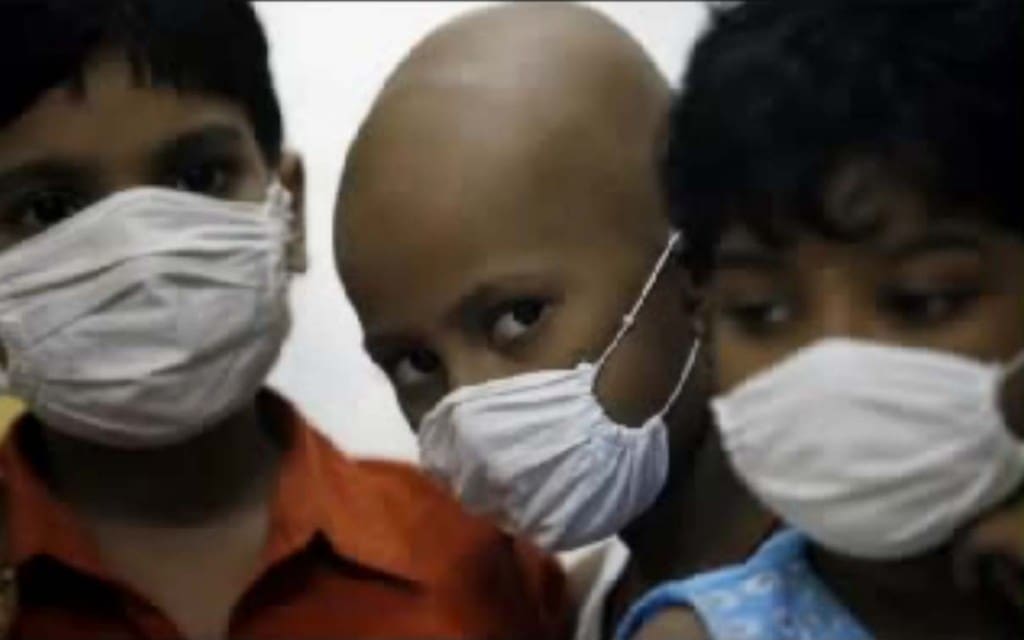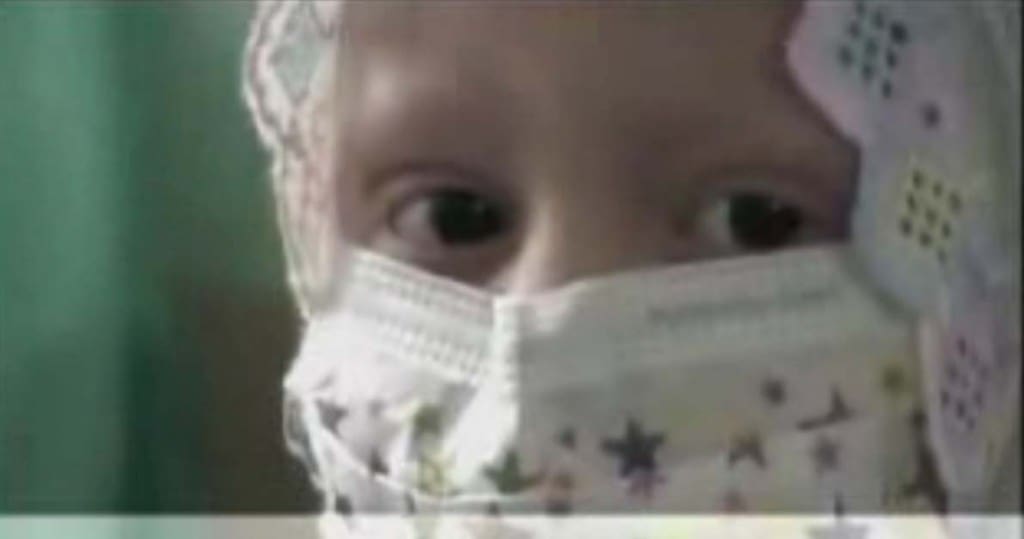200,000 deaths. Could Fukushima get this bad?
This video was produced by my students at the University of Mohyla‘s Institute for the Digital Future of Journalism in Kiev, Ukraine. It’s in Ukrainian, so my English-speaking audience won’t be able to understand the narration or interviews.
Which is kinda beside the point, after you look at these kids.

Children are particularly vulnerable to the radioactivity spewed out in a meltdown. Their bodies are growing, and as part of the growth process, the body is constantly looking for calcium to add to their bone structure.
In light of the recent disaster at the Fukushima Reactor Complex in Japan, it is more than a little chilling to look at these pictures of deathly ill children that are still – STILL – turning up in “cancer blooms” in Ukraine, long past the time when the rest of the world considered the whole matter done & dealt with. That’s the thing about true nuclear meltdowns: they don’t just go away when the news cycle gets bored of them (they way it so clearly has with the Fukushima situation).

The problem is that Strontium-90 looks to the body like calcium. So the children's bodies grab it and add it to the calcium being deposited in the bones. And once it's there it quietly goes about poisoning the bone marrow, causing strange and unpredictable cancers. Mutations. Leukemia is about as benign as it gets.
So look at these images. Remember that back in ’86, the governments — in the USSR and elsewhere – were also saying that there was nothing to worry about. That the levels of radiation that were released were so low that they posed no real danger. Nothing to worry about. Move along.
It came as quite a surprise to me to learn that there is a widely known (but officially denied) statistic: 200,000 people have died as a result of the radiation leak at Chernobyl. Apparently, even the average Ukrainian on the street (Dmitri Six-Pack?) knows that the government has drastically underplayed the casualties. The problem is that it is devilishly hard to pin down what it is that has caused a death 5, 10, 20 or more years after an event. Was it the radiation? Or heavy metals in the groundwater? Second-hand smoke? Or just genetic bad luck?

- Valiant Ukrainian doctors refused to shut up about the root causes of the cancer crisis. Some of them paid a heavy price for not going along with the program. Not shutting up.
When I was teaching at Mohyla, coincidentally, across the hall from my classroom, there was a doctor’s conference being held. The doctors were quietly furious. They felt that they had been screaming their lungs out about this problem, but that they were being ignored, hushed up.
Even arrested and carted away for daring to contradict the official line.
They had come to a journalism school to meet directly with people who they hoped would help them sound the alarm. To tell the story that things weren’t what the Men In Charge were saying.
“At least 500,000 people — perhaps more — have already died out of the two million people who were officially classed as victims of Chernobyl in Ukraine,” said Nikolai Omelyanets, deputy head of the National Commission for Radiation Protection in Ukraine. “[Studies show] that 34,499 people who took part in the clean-up of Chernobyl have died in the years since the catastrophe. The deaths of these people from cancers were nearly three times as high as in the rest of the population.
“We have found that infant mortality increased 20 percent to 30 percent because of chronic exposure to radiation after the accident. All this information has been ignored by the IAEA and WHO. We sent it to them in March last year and again in June. They’ve not said why they haven’t accepted it.”
Evgenia Stepanova, of the Ukrainian government’s Scientific Center for Radiation Medicine, said: “We’re overwhelmed by thyroid cancers, leukemias and genetic mutations that are not recorded in the WHO data and which were practically unknown 20 years ago.”
It’s impossible to look at these pictures and not feel a small sliver of dread in the pit of your stomach.
This is going to happen in Japan. The invisible killer has already been unleashed there. The radioactive poisons released into the ocean are, by definition, heavy metals. They aren’t going to go very far. At least, not at first.
So decades from now, the fish that eat the crustaceans that eat the plants that grow in the muck … those fish will have Strontium-90 in them. Cesium-137. Ruthenium-106. Phosphorus-32. Plutonium. Uranium. God knows what else.
I haven’t seen a TV news show yet that has come clean about what is being released into the environment. The closest we got was on the Bill Maher show last Friday night, where scientist Michio Kaku said it plainly: “This is a giant science experiment. And we are all the guinea pigs.”



